John Hurrell – 26 November, 2013
Make no mistake, physical though it is, this is an incredibly dense show with its intellectual layering. However there is plenty of humour - some savagely excoriating (Seymour, Basher), others more droll and chirpy (et al., Upritchard, Laird, Carr and Arps) - as if to compensate you for being preached at. That is, there are both sweet and tart lollies to suck on after you've gulped down the horticulture / lifestyle redirecting pills from Thom and Cheng.
Auckland
Edith Amituanai, Dan Arps, Wayne Barrar, Martin Basher, Mladen Bizumic, Dorota Broda, Steve Carr, Xin Cheng, Stella Corkery, Tessa Laird, Allan McDonald, Richard Maloy, Louise Menzies, Shannon Novak, Ava Seymour, Shannon Te Ao & Iain Frengley, Isobel Thom, Francis Upritchard, et al.
Freedom Farmers
Curated by Natasha Conland
26 October 2013 - 23 February 2014
Let me start off with a little casual observation: A couple of weeks ago while I was having my breakfast of muesli and fruit (shovelling it down while hunched over my computer, as I usually do), I noticed on the Guardian art reviews website that Adrian Searle was reviewing a show at Tate Liverpool with an article called Art Turning Left: revolution in the head, about what he calls ‘Two hundred years of political art’. As I started to wend my way through his discussion, a little box in a column on the righthand side designed to distract me did exactly that. I got sucked into another compelling piece of writing by another Guardian art critic, Jonathan Jones, about a show at Tate Britain. Jones’ review was entitled The revolution will not be aestheticised: the top rightwing artists.
Amongst the many conversations I have while wandering around Auckland’s inner city galleries, one pattern I’ve often noticed is that if I verbally introduce into some discursive topic or other the term leftwing or rightwing I can guarantee a bout of eye-rolling and muffled snorting from whomever I’m chatting to. I am invariably told art is far too complex a subject, its attendant community far too varied a population, to make such reductive claims. Such terminology is obsolete now. Have a rethink.
So when I notice Messers Searle and Jones confidently bandying these terms about, and then examine the intro wall panel for Natasha Conland’s large contemporary art exhibition Freedom Farmers at Auckland Art Gallery Toi o Tamaki - a cluster of almost twenty minishows - a utopian based project of avowedly ideational focus that ‘positions artists as creative leaders in a culture that values invention, forward thinking and liberty,’ I wonder what might that ‘forward thinking’ be?
Is it a synonym for ‘progressive thinking’, another oft-used expression for leftwing or Marxist thought? Or am I, in my search for clarity, barking up the wrong tree and that ‘freedom’ - even if it is actually about independence from the thrall of the globally dominant capitalist trading system and its facile consumerist society (perhaps via self sustaining food and clothing production, or bartering) - can be rightwing too?
Or is that nonsensical? It seems to be, doesn’t it? The issue is not about the sovereignty of individual governments or nation states (their bolstering or liberation) but about a worldwide economic system. That’s the focus of this show.
Of course there is a certain amount of hype one always has to plough through when reading gallery wall labels. “The artists of this era have matured to become leaders: they are no longer ‘the young’ but a group of influencers…” Say that to the residents of suburban Auckland (wearied from the local larrikins performing noisy and smelly burnouts in their street) when they are in the gallery watching Steve Carr’s seemingly boy-racer sympathetic video, or to the renters of state houses confronted by Ava Seymour’s apparently malicious collages. Or even to the artists themselves. Do they really want to mature? Is their aim to become responsible? Conland would say ‘Yes it is. It’s a new model of planet sensitive, global community oriented art practice.’
Looking at the organisation of the twenty artists throughout the nine rooms, what’s surprising is the viscerality, the sensuality of much of the work. There is a lot of physical wallop to the show, for Tessa Laird, Francis Upritchard and Dan Arps make good use of saturated colour; et al., Shannon Te Ao and Iain Frengley effective aural dynamics; and Richard Maloy, Xin Cheng and Martin Basher clever manipulation of space.
Make no mistake, physical though it is, this is an incredibly dense show with its intellectual layering. However there is plenty of humour - some savagely excoriating (Seymour, Basher), others more droll and chirpy (et al., Upritchard, Laird, Carr and Arps) - as if to compensate you for being preached at. That is, there are both sweet and tart lollies to suck on after you’ve gulped down the horticulture / lifestyle redirecting pills from Thom and Cheng. Other contributions are about recycling (Maloy, McDonald), ecological issues (Barrar, Bizumic), colonial history and different communities (Te Ao and Frengley, Amituanai, Menzies), or capitalism (Broda) - while others still just don’t sit comfortably in the show at all (Corkery, Novak). Their inclusion is bizarre.
Certain artists here (especially et al., Arps and Basher) have projects sufficiently complex and multi-layered that their installations will repay several visits as you keep discovering new details. These three contributors are a sort of triumvirate that dominates the show with the richness of its offerings. Each of the three is brilliant at spatial organisation, at stacking up meanings, and providing surprises for you to stumble across. They are what will keep you repeatedly visiting Freedom Farmers during the Christmas recess, for they always provide something else for you to conceptually unravel next time you pop in. Nurturers and growers of ideas and sensations - for the present and the future.
John Hurrell
Recent Comments
John Hurrell
The online discussions from this review have now closed. Many thanks to the energetic contributors.
Owen Pratt
"Objects, objects, objects... where is south Auckland? " Just over the Mangere Bridge. But seriously Barry, we are as one, ...
Barry Thomas
2. I don't think I want a bar of working under a curator in the way these artists are working...
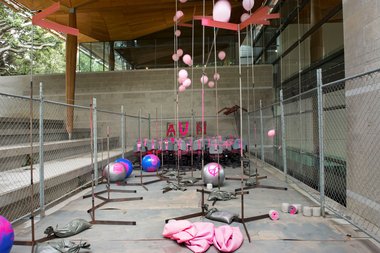
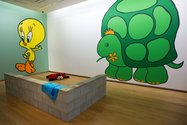

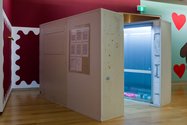
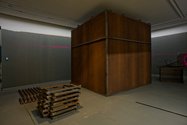
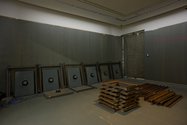
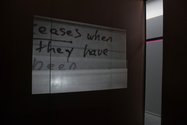
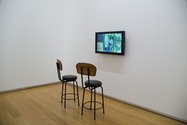
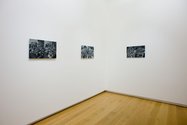
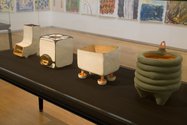
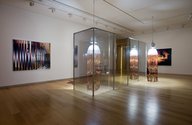
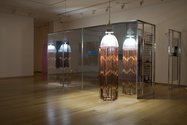
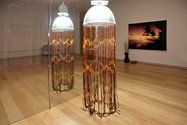
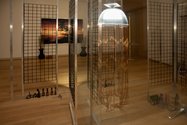
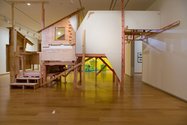
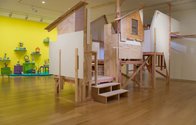
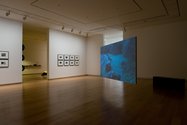
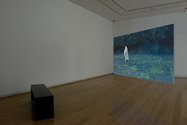
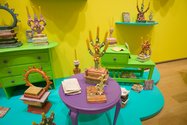
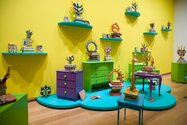
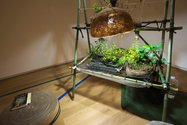
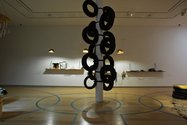
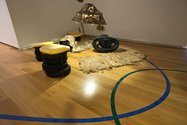
 Advertising in this column
Advertising in this column Two Rooms presents a program of residencies and projects
Two Rooms presents a program of residencies and projects



This Discussion has 24 comments.
Comment
Ralph Paine, 4:06 p.m. 28 November, 2013 #
Utopian is the word here, not political. Quite different things/processes. And I guess the gallery as a place of model making, tinkering, invention, games, daydreaming, etc. ought always to be a utopian enclave of sorts; a place somewhat separate from the pragmatic realm of politics.
Perhaps this is why the curatorial discourse framing the exhibition is tragically/laughably unconvincing. Influencers? Leaders? Grown-ups? Eco-entrepreneurs?
Utopians are crack pots, visionaries, channellers, fanatics, pamphleteers.
On this occasion, have any escaped capture by a neo-liberal over-coding of the gallery space?
John Hurrell, 11:46 p.m. 30 November, 2013 #
Here is an interview with Natasha Conland about the show:
http://ocula.com/magazine/conversations/natasha-conland/?preview=true
John Hurrell, 11:59 a.m. 3 December, 2013 #
Looking at Natasha Conland's enthusiasm for the notion of Artist as Farmer, here is an alternative view - a link to Dave Hickey advocating Piracy not Farming.
http://www.brooklynrail.org/2013/11/art_books/dave-hickey-with-charles-schultz
Ralph Paine, 1:44 p.m. 3 December, 2013 #
Cool! Thanks John. If this was Facebook, I'd 'Like'.
There's a great Negri two-liner about museums/galleries (Alma Venus: Poverty 12.2, in Time for Revolution, p. 203): "Consequently the monuments erected by the Powerful to the divinity of measure must be destroyed, just as the museums, veritable temples fashioned by the measure of Power, must be deserted. What is beautiful is the generation of subjectivity."
Negri, then, is the radical pole: desertion, exodus, abandonment, walking away: as D&G would say, "deterritorialisation".... But where and how to reterritorialise (and without this reterritorialisation being suicidal, and thus, in D&G's terms, fascistic)? On (within) a new subjectivity? A nomadic subjectivity? A beautiful subjectivity? A new people and a new earth (D&G, WIP?)? This might be Hickey’s pirates. But how do they even begin to walk away from the museums? How does Hickey do it? How do we even start to deterritorialise? What 'decision' (Negri) would begin assembling the desire required to do so? The museums, so invested with the resplendent attractions of power -- architecture/exhibits/systems of thought. Yes, the museums, such major assemblers of collective desire. Impossible to walk away from? Or perhaps museums have become so enmeshed in the security-entertainment complex http://www.youtube.com/watch?v=JHPVPrT4xJk that it's more the case of how could we not walk away! In this sense museums would be negative preconditions for our becoming -- which is kinda what History (read Capitalism-as-Universal History) itself is for all becomings... And yet who of us is not still attracted to museums? Or is it the ruins of the museum that attracts us? Or Vegas-as-faux Museum. A place to return to, to wander back to as if by chance, or out of some pure memory of an already abandoned future?
Kant said something similar to Negri, and yet perhaps for different reasons: "Those who leave a museum to turn towards the beauties of Nature deserve respect." But for us, is there still Nature? Bruno Latour's 2013 Gifford Lectures (available on line at Edinburgh University) are an amazing performance to behold (if you have the five or six hours required!), dealing as they do with a complete rethink of the concept of Nature today. But what have museums to do with the coming eco-wars?
Ralph Paine, 1:30 p.m. 1 December, 2013 #
“One flees to the shepherds [Arcadia] from the controversies that agitate the market-place. But this flight—which takes place in art—depends inevitably upon a feeling that the society left behind will continue to protect and provide for the fugitive.”—Clement Greenburg
There is a troubling curatorial/institutional insistence with Freedom Farmers that the gallery space open itself unconditionally to the world of politico-economic utility; that a smooth transition be formed between the white cube-as-Utopia (and on this occasion, Arcadia) and the society which contains it (as an outside-within, a nowhere/now-here). This is what I meant when I said “a neo-liberal over-coding of the gallery”—neo-liberalism pretty much being the only politico-economic game in town right now. Hence the gallery becomes an Ideas Market, a trading floor of Cultural Capital, a Creative Industries think-tank, a Better By Design-type seminar opportunity, a Life Style promo-scape; and the artists are now Mentors, Leaders, Cultural Captains, Professionals, Influencers, Eco-entrepreneurs.
Robert Smithson (a true visionary) said that art and utility don’t mix. In which case, conceiving and negotiating a path between the pragmatic realm of the politico-economic and the enclave of the gallery is no easy task. In my view Conland makes it seem quite the opposite, as if in today’s world all previous conceptions and negotiations, all difficulties, have now collapsed into a smoothed-out continuum sans breaks, differences, thresholds, complex transitions between zones, and so on. And, for that matter, seemingly without any concern whatsoever that the gallery-as-enclosure need be nurtured and protected by society precisely as such: Utopian.
John Hurrell, 2:33 p.m. 1 December, 2013 #
Ralph, is there not a nihilistic aspect to this show, a component that is anti-language, rejecting meaning except perhaps catharsis? (Though chances are it is unintended.)
I'm thinking of et al.'s looped film made with John Christoffels, the contents of Dan Arps' vitrines, or even the spewing of water by Shannon Te Ao in his performance filmed by Iain Frengley, or Steve Carr's 'Burnout'?
An unconscious rejection of functionalism here seems to be apparent. In these examples I suggest there is a mockery of utility as an aspiration.
Ralph Paine, 4:22 p.m. 1 December, 2013 #
Yes, you're right John. The artists/artworks are all to a varying degree nicely crack potty, visionary, fanatical, etc. My concern is with the curatorial/institutional over-coding of the work.... It kinda tones down, tames, and ultimately captures the Utopian spirit of the art, transforming things into what they aren't. In my view Conland lacks the visionary vocab and grammar required for these artists, resorting instead to Creative Industries-speak and the same old and tedious neo-liberal claims of freedom and liberty.
Funny, when I first heard the name Freedom Farmers my head got all tangled up in notions of expensive free range pork and industrialised agriculture.... Hmmmm.
Owen Pratt, 8 p.m. 1 December, 2013 #
'neo-liberalism pretty much being the only politico-economic game in town right now.'
not so sure of that Ralph, the revolution is coming.
fu-k utopia / dystopia. transcend to atopia.
Ralph Paine, 11:26 a.m. 3 December, 2013 #
But hasn't Capitalism become our absolute horizon?
In any case, Atopia seems to me a pure nowheres-ville, thus requiring the addition of other conceptual terms. I quite like Erewhon, the title of Samuel Butler’s novel. Erewhon provided Deleuze and Guattari with a way of rethinking Utopia: for them Erewhon “refers not only to no-where but also to now-here” (Gilles Deleuze and Félix Guattari, What is Philosophy?, trans. Graham Burchell and Hugh Tomlinson, Verso, London & New York, 1994, p. 100). In this sense Utopia becomes an immanent struggle, one occurring both within and against the real of present conditions.
Of course Erewhon is also an actual place. When in the mid-nineteenth century Butler travelled to Aotearoa/New Zealand he purchased a high country property out beyond Methven in the South Island. Butler named the property Mesopotamia and ran sheep there (farmed!) for a number of years, returning to London in 1864. The property on the other side of the river valley was subsequently named Erewhon after Butler’s novel. When I was a child my mother used to refer to NZ as Erewhon.
Meanwhile, Fredrich Jameson’s two books Archaeologies of the Future: The Desire Called Utopia and Other Science Fictions, & Valences of the Dialectic are both incredibly powerful reminders that the name Utopia is as relevant and important as ever for the revolutionary imagination.
Owen Pratt, 8:54 a.m. 4 December, 2013 #
Utopia literally translates to 'nowhere' and as a sub translation from Greek to 'good place'.
I do like the active and extant verb usage by Burchell and Tomlinson that you bring to the conversation however the main problem I have with utopian visions and the bastard twin, is the idealogical base they provide. After all isn't the 'absolute horizon' of neo liberal capitalism just some pogues Utopia? (your and my dystopia?)
Nibly skipping over the problem of being a cynical bastard, I would align an atopic position with an atheistic one; neither having faith in a godhead nor the negative.
Ralph Paine, 12:58 p.m. 5 December, 2013 #
A good question: how to distinguish all the different Utopias, including the revolutionary? This patently—to be more positive about Conland’s role—is an important aspect of the curatorial agenda. Here each artist day dreams and tinkers away in a different manner. Sure. But the whys and wherefores of possible connections back into the politico-economic realm seem rather stymied from get go; the politico-economic as pre-given reality is projected forward, smothering the gallery space... A post-hippie and cynical opportunism dominates, disguised, of course, by all the leadership, etc. propaganda.
Interesting that by the end of their investigation of Utopia (Erewhon) in What is Philosophy? Deleuze and Guattari say that perhaps Utopia is not such a good concept after all, “because even when opposed to History (Dystopia) it is still subject to it and lodged within it as an ideal or motivation.” They then go on to explore the concept of Becoming as an alternative. Perhaps D&G’s Becoming is the same as your Atopia Owen???
Barry Thomas, 10:19 p.m. 25 February, 2014 #
I am not sure A... and Dys... have much to do with it. people dream into the space... artists dream into the space... the space is full of the known, the historic and the new eventuates... levers off the known. I'd like to ask Owen and Ralph what other utopic visions other than Bruce Grenville's Occussy Ambeno... they know of... and while we are on this track... where any humour has gone in this show?
Ralph Paine, 12:30 p.m. 26 February, 2014 #
I had a friend from Vienna staying last week—a friend not unfamiliar with the museums, galleries, biennales, art schools, etc. of Australia, Europe, and the Americas, or the relation of these to philosophy & theory. Anyhows, one day during the week he took himself along to Freedom Farmers. Debriefing that evening he expressed how much he “enjoyed” the show; how it was one of the “best little exhibitions” he’d visited in a couple of years. “Did you actually register the name of the exhibition, read the pamphlet or any of the wall texts?” I queried. “Nah!” was his insistent and instant reply. “Perfect” I thought: exercising a unique version of free artistic action, he’d quite simply bracketed out all the curatorial over-coding,signs and directives (order-words), thus experiencing as best he could a non-categorised grouping of generic, contemporary artworks.
Perhaps, Barry, his was a utopian gesture of sorts, a way of walking into and around the institutional space, and out again. And perhaps, then, all this talk of space/place/site/topoi requires its supplement of time; the addition of its temporal modality. In my friend’s case, I don’t think he lingered in the building for long!
In any case, and in my view, the art-aesthetics of walking is one way to go in time, one way of manifesting—in Fredric Jameson’s words—“the desire called utopia”. The problem/question of whether to walk away from the art institutions/museums (as per my comments above) in the sense of exodus or escape, or whether to keep going back, is a dynamic part of the contemporary, global discussion about art-aesthetics. Your desire seems to lead you back into the art institution, in order that your practice and the collective practices in which you engage might have agency there. Perhaps right now we need be cautious of what we wish for.
Barry Thomas, 10:56 p.m. 26 February, 2014 #
1. Ralph... I am not sure your friend and I would see eye (contact) to eye...
I wonder if (s)he knows of the work of letting space?
My practice and or collaborations have had about as little to do with mainstream art institutions as kamakasi did to water molecules... I have been recognised by Te Papa in something I did 36 years ago - outside art institutions. I happen to take heart that for once that one institution knew its job... to hold and preserve art and cultural memes that have significance/value.
Quite contrary to your assertion of me desiring/ needing institutional support - very much the contrary actually - one should question the capacity of such institutions in their delivery of what? new art? new directions?
I agree wholeheartedly with the condemnary responses from Amery and Handscombe... this institution does not align with the history of art I know or respect... it has delivered absolute curatorial laziness and profoundly weak, academically unscrutinisable, exegesis.
Espousing top shelf ideas and ideals like utopia, freedom, whilst running an insular, myopic ship shows me that these artists likewise delivered lazy work.
I happen to believe there is no such thing as laziness... only fear - so the question arises - what fears reside in this show... 1. curatorial... Conland more than likely feared not delivering a show (as far as I am told) within a ridiculous 2 month time frame! Feared some version of Terry's local loyalties/ paybacks/ otherwise loss of contractual relations. 2. The artists played along (unlike the protesting Sydney biennale... see... http://lamblegs.wordpress.com/2014/02/19/an-open-letter-to-the-board-of-directors-biennale-of-sydney/ where they actually acted against the powers that be and the veiled threats and against the likely loss of earning et al. And with Terry's List project displayed by Robert Leonard - a list of who he would or would not bed to get ahead in New Zealand art... here we see deliberate, grunty, and in Terry's case very funny / honest grit - against the fear mongering of the - what are they - mercenary artists in Freedom Farmers. In our post Duchamp world we simply must question the nature of the institution nay? Not so our freedom farmed artist flock.
A quick walk around a gallery is - agreed - a metaphore of freedom... it is also an unquestioning absorption of a status quo... a status quo art of a corporate institution that delivers no searing incite, no outrage, no amazement, no wonder, no spark of revolution... just a hundred or so objects that barely hint at what could have been great.
When artists collectivise, collaborate, address vast cultural contradictions and the issues of our time in ways that actually help - followed by institutions that recognise this need as a bloody good way forward from conceptual culdesacs... then we will stand up and praise said institution and its ring ins... not so Freedom Farmers...
Barry Thomas, 10:56 p.m. 26 February, 2014 #
2. I don't think I want a bar of working under a curator in the way these artists are working... it is not in any way a display of utopia, freedom, breeding great ideas... it is being paid to do lip service to poorly conceived and delivered interpretation of what is current... but as Terry suggests - it is taking us and your friend straight back into... pretty ceramics of books an artist has read, making cute references to corporate controls via spray painted office chairs... where on earth is the risk? where is the comedy? where are the visions? where is truth? a recycled wood playground? Objects, objects, objects... where is south Auckland?
Where is the outrage that our civil servants are now trained by American secret services how to destroy dissidents in New Zealand? Where are the destroyed lands? the tears of Tane? the 1% in Paratai drive? and
WHERE ARE THE SOLUTIONS?
My son went to see the show - he said "there's no growing... ideas there"
Owen Pratt, 8:33 a.m. 27 February, 2014 #
"Objects, objects, objects... where is south Auckland? "
Just over the Mangere Bridge.
But seriously Barry, we are as one, under the Super City.
Daniel Webby, 10:15 p.m. 7 December, 2013 #
I’m also for a rejection of utopia as the starting point for a discussion of what lies outside the current state of worthless value creation, domination and rapidly accelerating centralisation of power. It seems to me the conversation which is absent – in aesthetics and elsewhere – is not one of what is ideal, but a much simpler, what is possible?
As to how the work responds to this simpler question, my reading is of a certain ambivalent distance. Nostalgia and cynicism are present, as is despair, however in combination there is a sense of evenness, of balance - the question, it seems, can probably wait for tomorrow. I should add these descriptors are of an after-taste, not of specific projects.
And while it’s tempting to take the role of an armchair radical squealing for a meaningful discourse as to the possibilities and attendant problems inherent in the rhetoric of “emancipatory” art, a prior discussion is required as to the project(s) of art which gave form to the new Auckland Art Gallery and, embedded within this, what conception of “public” was the structure designed to interface with (and to what end).
To my mind, the Freedom Farmers show is astutely aware of its relationship to these questions. As outlined in John’s reference to the introductory wall panel text, the show is, above all else, a celebration of invention. That this term carries allusions equal parts novelty and commodity would seem a question for a much expanded curatorial brief – an expanded brief somehow at odds with the lofty ambitions articulated by the award winning erection that is the new AAG.
Conspicuously absent from the materials for the show was a discussion of freedom as defined by its negative. Surely alongside the question of what is freedom, there is a need to consider what freedom isn’t.
It also seems useful to consider a show running in parallel with Freedom Farmers – that of the works from the private collection of Australian entrepreneur and art collector Naomi Milgrom. The freedom exhibited in Milgrom’s cultural project would seem far from rhetorical, who, curiously is also a farmer - well, that may be a stretch, but Milgrom's business empire does rely on certain outworking (farming?) practices.
On a more positive note, the AAG cafe is offering slices of Freedom – black sponge, kirsh mascarpone, citrus cherries and cucumber marshmallow - for only $8.80. (http://www.aucklandartgallery.com/media/5054691/freedom%20farmers%20menu.pdf)
Ralph Paine, 5:24 p.m. 11 December, 2013 #
What is possible?
For starters, the abandoning of all hope; or better, as Bruno Latour quips, all hype! It is quite possible that the Auckland Art Gallery might do that....
And what freedom is-not would be an interesting version of negative theology (the account of what God is-not), again a possible reintroduction of the newly given limits of the Earth, plus their correlative unfreedoms, perhaps.
Thanks Daniel.
Barry Thomas, 5:30 p.m. 22 February, 2014 #
Sorry John but can you elucidate on your phrase ".... a worldwide economic system. That’s the focus of this show."
Through my reading of the works I am having trouble finding precise and or useful art/commentary on your decanted understanding of the curatorial content via "world wide economic system"
John Hurrell, 7:51 p.m. 22 February, 2014 #
No Barry, I'm a distiller. Now Terrence Handscomb, he's a decanter.
Barry Thomas, 12:27 p.m. 25 February, 2014 #
Is that like you are more of a square box vestigial De Stijller and Terry more of the Descart De Kanter???
Owen Pratt, 4:27 p.m. 25 February, 2014 #
http://www.critical-theory.com/10-awful-philosophy-puns-to-waste-your-day/
Barry Thomas, 7:25 p.m. 25 February, 2014 #
Owen.. I am not sure you have followed the thread correctly (warning forum police alert)... lol... your post reminds me of my 1st edition copy of Banksy's :existencilism :-)
John Hurrell, 9:05 a.m. 27 February, 2014 #
The online discussions from this review have now closed. Many thanks to the energetic contributors.
Participate
Register to Participate.
Sign in
Sign in to an existing account.